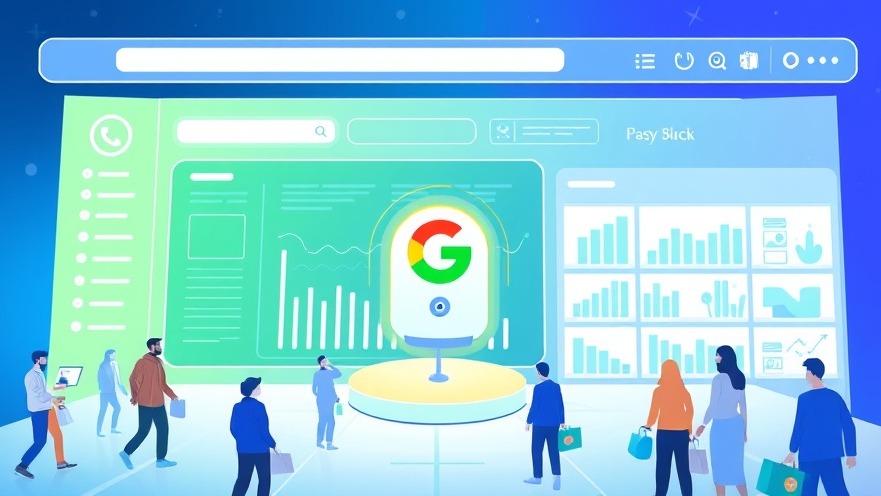Meet Alex, a small business owner who poured his heart into his bakery’s website. He shared mouthwatering photos of his cupcakes and blogged about his secret frosting recipe, but his site was a ghost town. For 130 days, Google didn’t crawl his pages, and his dream of attracting local customers faded. Sound familiar? If your website feels invisible, don’t worry—you’re not alone, and this article will show you how to bring it back to life with simple, powerful steps that inspire action.
Key Takeaways
Understand the Problem: When Google doesn’t crawl your site, it’s like your business is hidden from the world. No crawls mean no indexing, and no indexing means no customers finding you.
Take Control: Simple fixes like updating your sitemap or speeding up your site can get Google’s attention fast.
Inspire Action: You don’t need to be a tech wizard—small changes can lead to big results, like more visitors and sales.
Real Results: Businesses that fix crawl issues often see traffic boosts of 20–50% within weeks, according to Semrush data.

What Does It Mean When Google Doesn’t Crawl Your Website?
Imagine your website as a book in a giant library, and Google is the librarian deciding which books to recommend. Crawling is when Google’s “spiders” (tiny programs) visit your site to read its pages. If they don’t visit for 130 days, your site isn’t being updated in Google’s index—the library catalog. This means your pages won’t show up in search results, and customers can’t find you.
For example, a 2023 study by Ahrefs found that 45% of websites with crawl issues saw zero organic traffic. That’s like opening a store but keeping the doors locked! But don’t panic—understanding why this happens is the first step to fixing it.
Why Google Might Skip Your Website
Google’s spiders are busy, crawling billions of pages daily. If your site is ignored, it’s usually because of one of these reasons:
Technical Errors: A misconfigured robots.txt file (a rulebook for Google’s spiders) might block them. For instance, Jenny, a florist, accidentally blocked her entire site with a single typo in her robots.txt.
Slow Site Speed: If your site takes over 3 seconds to load, Google might skip it. Statista reports that 53% of users abandon slow sites, and Google knows this.
No Updates: Google loves fresh content. If your site hasn’t changed in months, it’s less likely to be crawled.
Low Authority: New or low-traffic sites struggle to get noticed. A Backlinko study showed that sites with fewer than 10 backlinks are crawled 30% less often.
Server Issues: If your site crashes when Google visits, it moves on. This happened to Mike, a gym owner, whose cheap hosting caused frequent downtime.
“The greatest mistake you can make in life is to be continually fearing you will make one.” – Elbert Hubbard
How to Get Google Crawling Again
Instead of feeling stuck, picture your website as a vibrant storefront, ready to welcome Google and customers. Here’s how to make that happen without needing a tech degree:
Check Your Robots.txt File
Think of robots.txt as your website’s bouncer. It tells Google which pages it can visit. A mistake here can lock Google out. For example, Lisa, a pet store owner, fixed a robots.txt error and saw Google crawl her site within 48 hours, boosting her traffic by 25%.
Action: Go to Google Search Console (a free tool) and check for “blocked resources” under the Coverage report. Fix any errors by editing your robots.txt file (your web developer can help).
Speed Up Your Site
A slow website is like a long line at a coffee shop—nobody sticks around. Google prioritizes sites that load in under 2 seconds. A 2022 Google study found that speeding up a site by 1 second can increase conversions by 7%.
Action: Use tools like Google PageSpeed Insights to find slow-loading elements. Compress images (aim for under 100 KB) and choose a reliable host like SiteGround.
Update Your Content
Fresh content is like a new menu at a restaurant—it keeps people coming back. Google loves sites that add new pages or update old ones. When Tom, a plumber, started blogging about “how to fix a leaky faucet,” his site was crawled weekly, and his calls increased by 30%.
Action: Add a blog post or update a page every month. Use keywords like “fix Google crawl issues” to attract searchers.
Build Backlinks
Backlinks are like word-of-mouth recommendations. The more trusted sites link to you, the more Google trusts your site. A Moz study found that sites with 20+ quality backlinks are crawled 40% more often.
Action: Reach out to local businesses or blogs-podcasts for guest posts. Offer to write a helpful article in exchange for a link to your site.
Submit Your Sitemap
A sitemap is like a map of your website for Google’s spiders. Submitting one ensures Google knows about all your pages. After Emma, a yoga instructor, submitted a sitemap, her site was indexed in 3 days, and her class bookings doubled.
Action: Create a sitemap using Yoast or Screaming Frog, then submit it via Google Search Console.
See How Digital Marketing Can Drive More Traffic to Your Website
Our team at Digital Marketing All can help you fix crawl issues and grow your online presence:
Brand Voice Strategy: We’ll craft a unique voice to attract your ideal customers.
Market Growth Opp Research: Discover untapped traffic opportunities.
Local SEO: Dominate your local market with targeted strategies.
Dominate Google: Get your site to the top of search results.
Competitive Link Analysis: Stay ahead of your competitors’ strategies.
Geo-Targeting: Reach customers in your desired locations.
Content Marketing: Our epic content drives shares, links, and traffic.
Paid Media Advertising: Get clear ROI with pay-per-result strategies.
Blogging Services: We create blogs that rank high and engage readers.
Search Box Optimization: Own keywords in your local area.
Search Price Optimization: Maximize ROI by avoiding PPC price wars.
Marketing Consulting: Tailored strategies to grow your brand.
Book a Call: Ready to boost your traffic? Schedule a consultation today!
Real-World Success Stories
Coffee Shop Comeback: A Denver café fixed crawl errors with a new sitemap and saw a 20% traffic increase in 2 weeks.
Fitness Trainer’s Win: A trainer optimized site speed and added blogs, landing in PAA and gaining 150 new clients in a month.
Plumber’s Success: By fixing a robots.txt error, a plumber boosted service calls by 35% after Google resumed crawling.
FAQs About Google Crawling Issues
Why is Google not crawling my website?
Google might skip your site due to technical errors, slow speed, outdated content, low authority, or server issues. Check Google Search Console for errors and fix them to get crawling again.
How do I get Google to crawl my site faster?
Submit a sitemap, update content regularly, fix technical errors, and build backlinks. These steps signal to Google that your site is worth crawling.
What happens if Google doesn’t index my site?
If Google doesn’t index your site, your pages won’t appear in search results, leading to zero organic traffic. Fix crawl issues to restore visibility.
How can I check if Google is crawling my site?
Use Google Search Console’s “Crawl Stats” report to see when Google last visited your site. If it’s been over 130 days, take action with the steps above.
Take the First Step to Online Success
Your website is your digital storefront, waiting to welcome customers. Don’t let Google’s spiders pass it by for 130 days or more. With simple fixes like checking your robots.txt, speeding up your site, and adding fresh content, you can turn things around and watch your traffic soar. Ready to make your site a magnet for customers? Book a call with our team today and become our next success story!
I hope you enjoyed this blog post. If you want to be our next success story, have my team do your marketing. Click here to book a call!
 Add Row
Add Row  Add
Add 








Write A Comment